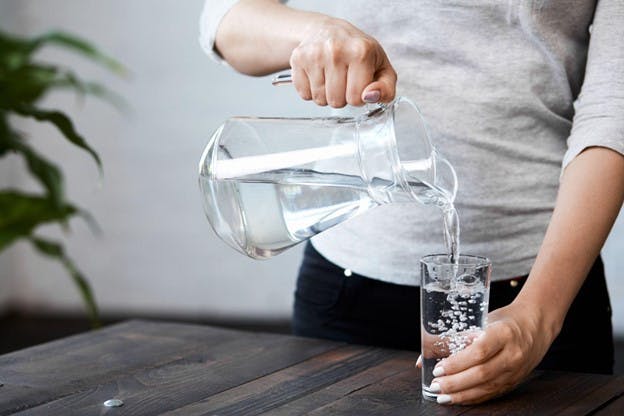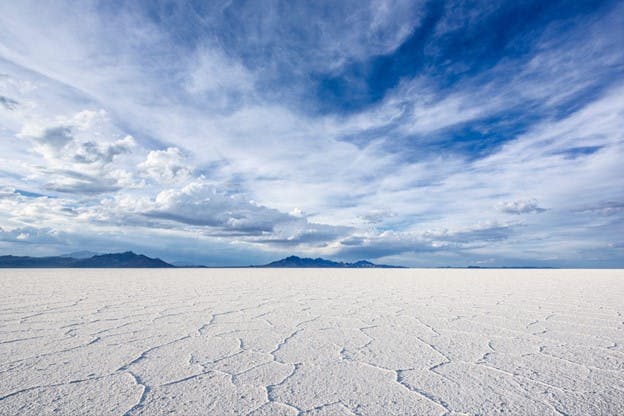🌟 New Arrival! Upgrade Your Water with Our Advanced Pitcher Filter. Shop Now
February 2024
Salt Lake City Water Quality: How Does It Compare?
For many people, Salt Lake City brings up associations with the 2002 Winter Olympics and the Church of Jesus Christ of Latter-Day Saints (LDS). But locals know there are more sides to this diverse city. From its growing tech scene to the Sundance Film Festival in nearby Park City, the Salt Lake City region has art, culture, and of course, the great outdoors.
But what’s the drinking water like in this city named for the largest saltwater lake in the U.S.? And how will a changing climate impact the region’s water supply?
Here’s what you need to know about Salt Lake City water quality, and what steps you can take to get rid of chemicals, metals, and minerals in your drinking water.
What Is the State of Water Quality in Salt Lake City, Utah?
According to the Salt Lake City Department of Public Utilities, the tap water in Salt Lake City is safe for people to drink—although it may be “harder” than what you’re used to in other parts of the U.S. The water system relies on surface water from nearby streams, but SLC Public Utilities adds groundwater when the supply is low, particularly in the summer months. This water tends to be “harder” than the surface water.
Hard water is water with a higher than usual mineral content—primarily calcium and magnesium—while soft water has higher levels of sodium. Drinking hard water isn’t a health concern for most people, but the minerals can affect the taste of the water, as well as leave unwanted residue on your dishes, clothing, and skin.
This is why many people who live in areas with hard water use a water softener to remove minerals from the water. You may even benefit from a water filter in the bathroom to reduce mineral buildup on your hair and skin.
How Is Salt Lake City Water Quality Monitored and Regulated?
The SLC Department of Public Utilities releases a Water Quality Report every year, with information on where Salt Lake City water comes from and how it’s treated. In 2023, it delivered more than 30,000 million gallons of water per day to over 365,000 people.
Salt Lake City water comes primarily from mountain streams in the Wasatch Mountain watersheds, but as runoff slows down in the summer, the department adds additional water from groundwater wells. This water is supplied to Salt Lake City, Cottonwood Heights, and South Salt Lake, as well as other parts of Salt Lake County.
Surface water goes through five stages of water treatment at three treatment plants before it’s stored in a reservoir:
- Coagulation: Coagulation uses chemical coagulants to cause dirt and other contaminants to clump together in groups called “flocs.”
- Flocculation: Flocculation involves stirring and mixing the water to create even larger clumps of particles.
- Sedimentation: Sedimentation occurs when heavy flocs settle to the bottom so they can be removed more easily.
- Filtration: Next, the water goes through several different filters, including sand and charcoal, to remove additional particles.
- Disinfection: Finally, the water is disinfected with chlorine to kill any remaining microorganisms and is treated with fluoride as a public health measure.
SLC’s groundwater isn’t treated the same way, because it has low contaminant levels due to natural underground filtration. SLC Public Utilities doesn’t recommend taking any special precautions before drinking tap water, except for immunocompromised people who may be at additional risk from microbial contaminants.

Are There Specific Contaminants or Pollutants of Concern in Salt Lake City's Water Supply?
The Environmental Protection Agency (EPA) sets federal standards for concentrations of contaminants in drinking water, including chemicals and microorganisms. The 2023 Water Quality Report claims that Salt Lake City water quality meets or exceeds these standards based on 2022 data. Some of these contaminants are naturally occurring, while others are a byproduct of the water treatment process.
For example, the U.S. EPA standards for chromium levels are a maximum of 100 parts per billion (ppb). The Point of the Mountain water treatment plant had chromium levels of 4.75 ppb—lower than EPA standards—as a result of “erosion of natural deposits,” while none was detected in the City Creek water treatment plant.
However, not all consumers will be satisfied with the standards found at EPA.gov. The Environmental Working Group (EWG) has more stringent recommendations on water contaminants based on more up-to-date research.
The EWG found that 14 contaminants in Salt Lake City water exceed their guidelines, including the following five contaminants of concern:
Chromium (Hexavalent)
Since the 2023 Salt Lake City Water Quality Report shows low levels of chromium in most of its plants, is this contaminant really a concern? That depends on whether it’s chromium-3 (trivalent) or chromium-6 (hexavalent).
According to the EWG, chromium-6 is “the cancer-causing chemical made notorious by the film Erin Brokovich,” and derives from natural and industrial sources.
The EPA doesn’t have a standard for chromium-6: the 100 ppb upper limit is for the total amount of chromium. The California Office of Environmental Health Hazard Assessment argues that chromium-6 levels should be no higher than 0.02 ppb, and Salt Lake City’s drinking water had levels at 22 times that recommendation:
- EPA maximum allowance: No legal limit
- EWG recommended maximum: 0.02 ppb
- Salt Lake City maximum detected level: 0.443 ppb
Nitrates
Nitrates are naturally occurring compounds that enter the water supply through fertilizer, septic tanks, and even rainfall. Excessive levels of nitrate can harm babies and infants, causing methemoglobinemia, or “blue-baby syndrome,” which can even be passed on during pregnancy. Nitrates and nitrites have also been linked to cancer.
Salt Lake City’s water quality meets the EPA guidelines for nitrate levels, but it exceeds the EWG’s recommendations by 12 times:
- EPA maximum allowance: 10 parts per million (ppm)
- EWG recommended maximum: 0.14 ppm
- Salt Lake City maximum detected level: 1.62 ppm
Total Trihalomethanes (TTHMs)
Trihalomethanes are a byproduct of the disinfection process. The total trihalomethanes (TTHM) group includes four chemicals—chloroform, bromoform, bromodichloromethane, and dibromochloromethane—which have been linked to an increased cancer risk.
Salt Lake City has an average of around 33 ppb of TTHMs, which is lower than the EPA allowance but higher than the EWG recommended maximum:
- EPA maximum allowance: 80 ppb
- EWG recommended maximum: 0.15 ppb
- Salt Lake City maximum contaminant level: 33.5 ppb
Haloacetic Acids (HAA5)
Haloacetic acids (HAA5) are another group of chemicals that are formed during the water treatment process when chlorine interacts with organic matter. They are:
- Monochloroacetic acid
- Dichloroacetic acid
- Trichloroacetic acid
- Monobromoacetic acid
- Dibromoacetic acid
These acids can increase cancer risk over time. The EPA sets a maximum allowance of 60 ppb, but the EWG recommends only 0.1 ppb. Although Salt Lake City water quality meets the EPA guidelines, it exceeds the EWG recommendations by 324 times:
- EPA maximum allowance: 60 ppb
- EWG recommended maximum: 0.1 ppb
- Salt Lake City maximum contaminant level: 32.4 ppb
Haloacetic Acids (HAA9)
Haloacetic acids (HAA9) include the five acids listed above, as well as four more:
- Bromochloroacetic acid
- Bromodichloroacetic acid
- Chlorodibromoacetic acid
- Tribromoacetic acid
These acids carry the same health risks as the HAA5 group, but there’s no legal limit for HAA9. HAA9 levels in Salt Lake City exceed EWG recommendations by 582 times:
- EPA maximum allowance: No legal limit
- EWG recommended maximum: 0.06 ppb
- Salt Lake City maximum contaminant level: 34.9 ppb
Are There Seasonal Variations That Can Impact Water Quality in Salt Lake City?
Salt Lake City relies on groundwater to make up for the shortage of surface water during summer months. This keeps the water supply steady, but it results in more hard water during this period due to groundwater’s higher mineral content.
In addition to seasonal variations, Salt Lake City is at risk of long-term water scarcity, especially as its population increases over the next few decades.
The water supply is also closely related to water levels in the Great Salt Lake, which is located just west of the city and has been steadily shrinking.
Although Salt Lake City residents don’t drink the water from the Great Salt Lake directly, its water level matters for two reasons. First, the “lake effect” contributes to as much as 8% of precipitation each winter, helping to maintain rainfall and snowpack.
Second, the more water people use, the less water that flows back into the lake, with human consumption accounting for a 40% decline in inflows since 1850.

What Measures Are in Place to Protect SLC Water Quality?
The best way to ensure a high-quality water supply is to protect Utah water at its source. The Department of Public Utilities and the Utah Department of Environmental Quality have several measures in place to protect and conserve Utah water.
First, SLC Public Utilities encourages source water protection with its "Keep It Pure” ad campaign, which includes tips on how to care for protected watersheds and limit the use of lawn fertilizers and pesticides that could leak into water sources. SLC Public Utilities also monitors groundwater to identify contamination as quickly as possible.
Salt Lake City has a wastewater system that treats up to 30 million gallons of sewage, as well as stormwater drains that filter out debris before discharging the water.
Finally, SLC Public Utilities performs annual and triennial sampling to identify possible lead and copper contamination in older homes.

Is Salt Lake City Water Safe to Drink?
Salt Lake City’s tap water is primarily treated water that comes from rivers and streams in the Wasatch Mountains. It may also contain groundwater as surface water supplies dwindle in the summer months. Although Salt Lake City water quality meets federal standards, it has some chemical contaminants that may be cause for concern.
Salt Lake City residents can use a home water filter like HomeWater’s 4-Stage Reverse Osmosis Under Counter Water Filter to remove contaminants like chlorine, chromium, and nitrates from your tap water. That way, you can drink as much water as you like without having to worry about its long-term impacts on your family’s health.